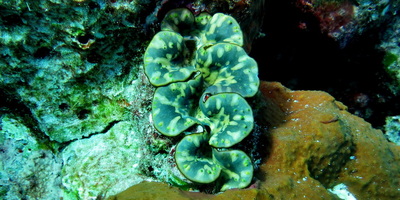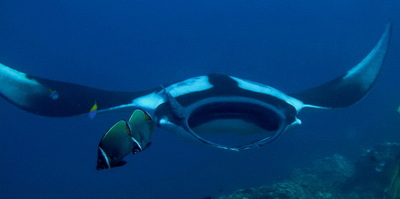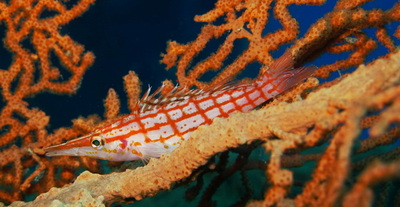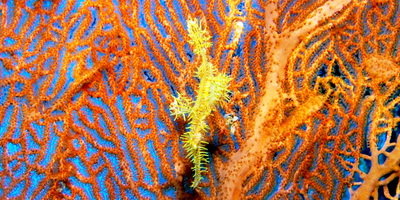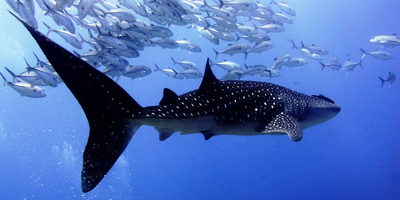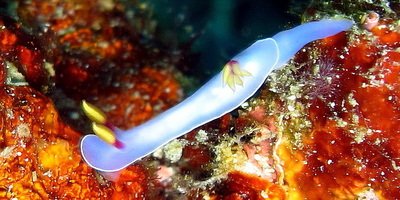Phuket Dive Guide : Phi Phi Leh - Loh Samah Bay
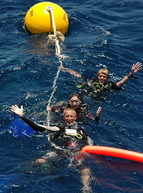
About the location and site
Loh Samah Bay is situated on the southeastern side of Phi Phi Leh. The bay is U-shaped with a large rocky islet at the entrance to the bay. There is a very small beach and small caves at the end of a very narrow gorge. It is actually separated from Maya Beach on the other side of the island by a very narrow cut in the rocks that it is possible to pass through.
The diving is centered around this cliff islet, which has walls on all sides. It is possible to circle this karst at least once on one tank of air at a relaxed pace. The steep walls of this rock are mirrored underwater, creating a feast for the eyes. You find barrel sponges, minor-size hard corals, scattered orange sea fans, sea whips, and clams. The whole site is home to the usual Phi Phi marine life. Numerous lionfish, scorpionfish and angelfish have made the site their home as well as parrotfish. This site is also a great macro site, including such rare and beautiful species as Harlequin Shrimps.
Loh Samah Bay is situated on the southeastern side of Phi Phi Leh. The bay is U-shaped with a large rocky islet at the entrance to the bay. There is a very small beach and small caves at the end of a very narrow gorge. It is actually separated from Maya Beach on the other side of the island by a very narrow cut in the rocks that it is possible to pass through.
The diving is centered around this cliff islet, which has walls on all sides. It is possible to circle this karst at least once on one tank of air at a relaxed pace. The steep walls of this rock are mirrored underwater, creating a feast for the eyes. You find barrel sponges, minor-size hard corals, scattered orange sea fans, sea whips, and clams. The whole site is home to the usual Phi Phi marine life. Numerous lionfish, scorpionfish and angelfish have made the site their home as well as parrotfish. This site is also a great macro site, including such rare and beautiful species as Harlequin Shrimps.
Best to follow the karst all the way around back into the bay, under overhangs, until the seabed rises back to 10m. Inside the bay is an extensive hard coral garden featuring lots of brain coral and anemones at depths of 2-12m, which is also ideal for snorkeling.
The greatest attraction of this dive site is a narrow channel, 15m deep on the east side where divers can swim through it. Seahorses are sometimes found here. It is not unusual to see a turtle here ripping at the bubble coral while it feeds. Loh Samah Bay is a great shallow dive, often used for night dives. Liveaboard boats often moor here in the evenings. Torches show off the array of different colours on the wall - a feast for your eyes. Coral polyps come out to feed and masses of shrimps can be seen as you search in the cracks, as well as painted lobster and decorated crabs. The numerous moray eels are more active at night too.
The greatest attraction of this dive site is a narrow channel, 15m deep on the east side where divers can swim through it. Seahorses are sometimes found here. It is not unusual to see a turtle here ripping at the bubble coral while it feeds. Loh Samah Bay is a great shallow dive, often used for night dives. Liveaboard boats often moor here in the evenings. Torches show off the array of different colours on the wall - a feast for your eyes. Coral polyps come out to feed and masses of shrimps can be seen as you search in the cracks, as well as painted lobster and decorated crabs. The numerous moray eels are more active at night too.
